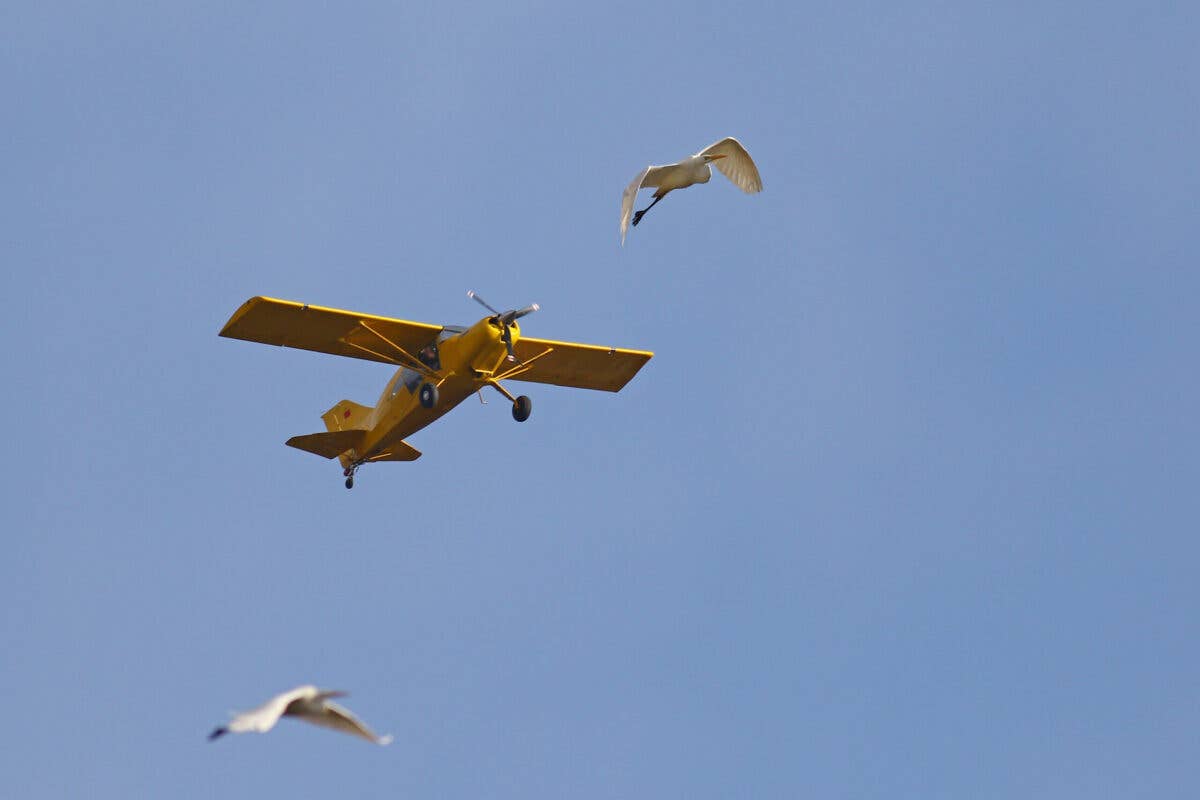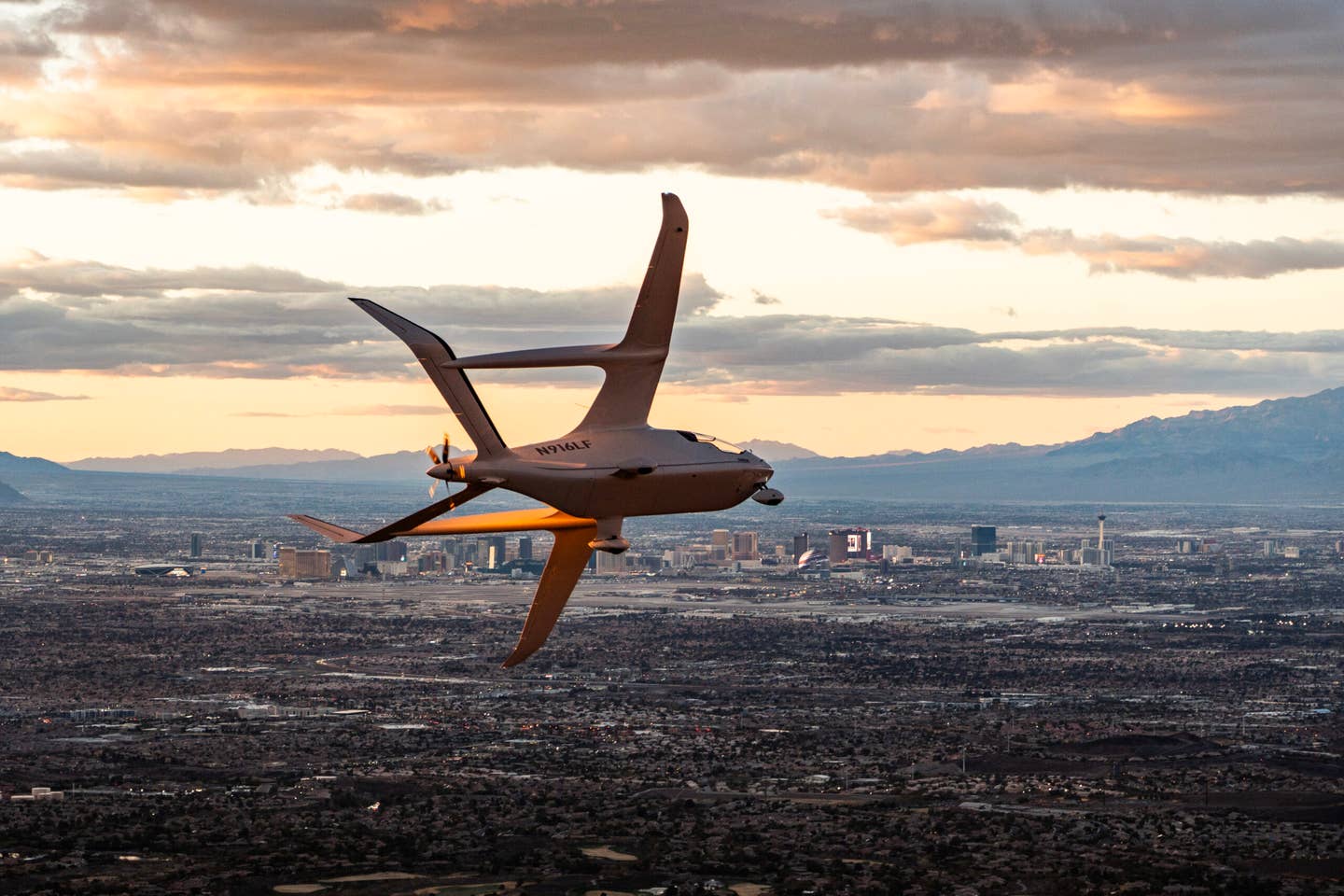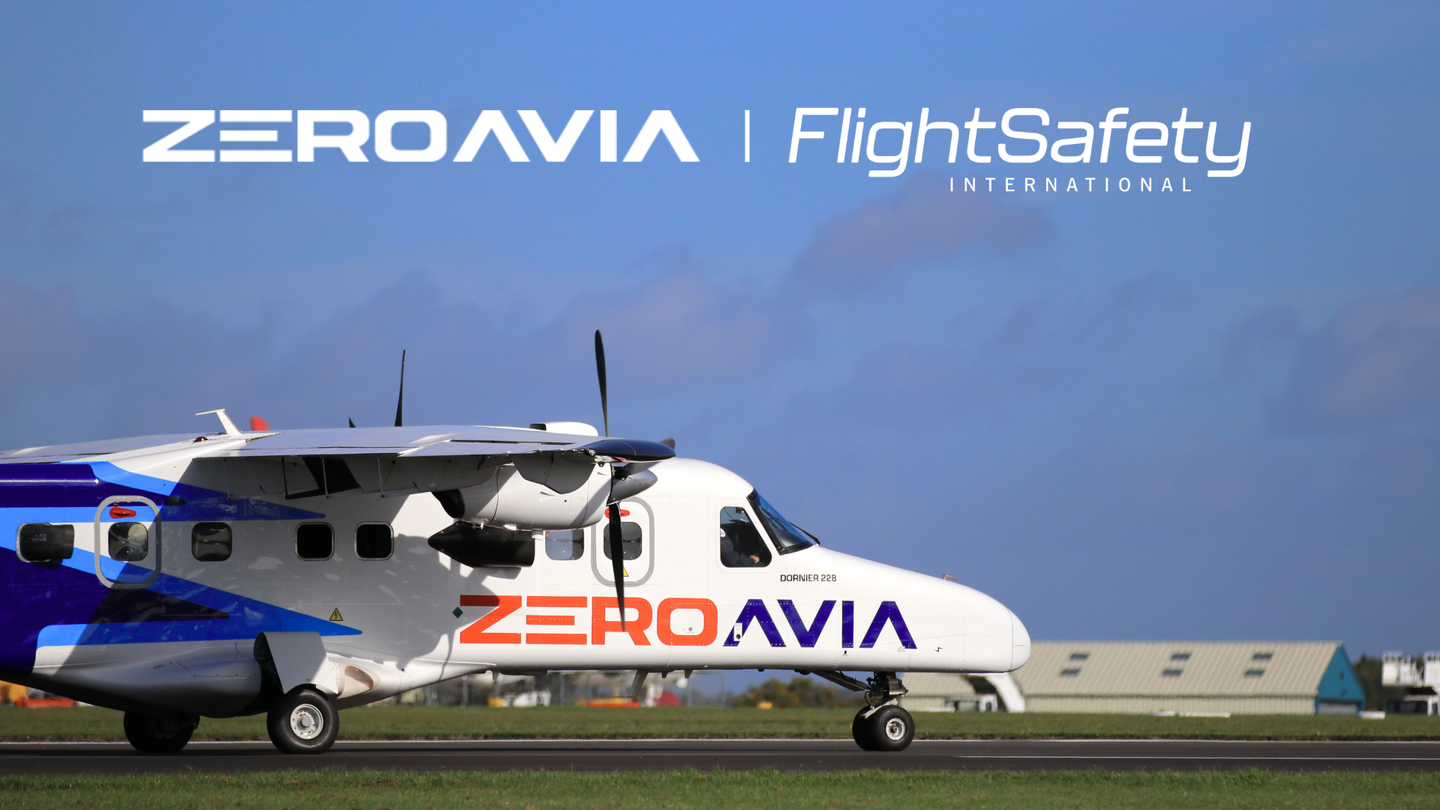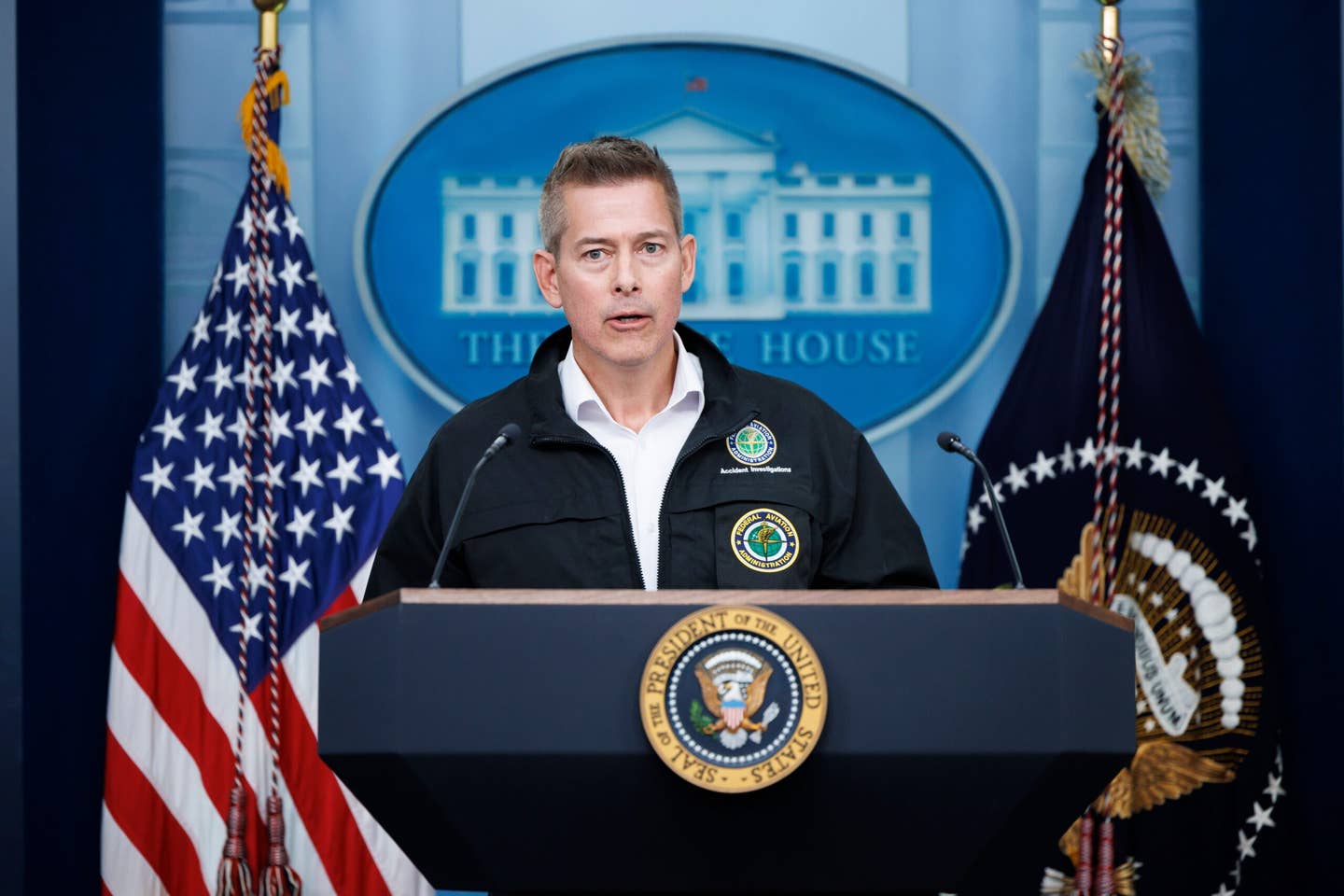FAA Researching UV LED Lights for Prevention of Increasing Bird Strikes
The UV LED light the FAA is testing is housed in traditional aircraft landing lights and is compatible with older aircraft.

According to the FAA, research indicates that mounting a UV LED light on landing gear on the exterior of the aircraft could potentially stop bird strikes before they occur. [Credit: Adobe Stock]
Bird strikes are up by as much as 33 percent in recent years. Could an ultraviolet (UV) light-emitting diode (LED) installed on general aviation aircraft help prevent dangerous bird strikes? According to the FAA, research indicates that mounting a pulsing UV LED light housed in a traditional landing light on the exterior of the aircraft could alert birds of the aircraft's position, potentially stopping bird strikes before they have an opportunity to occur.
Bird and wildlife strikes are expensive and potentially deadly for GA and commercial aircraft. Between 1988 and 2021, wildlife strikes were responsible for killing more than 301 people and destroying about 300 aircraft, according to the FAA.
"You definitely share this sky with the birds," said Dan Dellmyer, a pilot and a researcher in the FAA's William J. Hughes Technical Center's Aviation Research Division near Atlantic City, New Jersey, and a pilot. "I've ducked under them, I've ducked over them. It's really fascinating sharing the air space with them."
Decades of Data
That shared air space can come with big consequences. In January 2009, an Airbus A320 hit a flock of Canadian geese during takeoff, creating international headlines when it forced the US Airways Flight 1549 to land on the Hudson River.
Since that landmark forced- landing incident, the FAA has spent more than $30 million researching potential methods of advanced detection and aviaon monitoring.
Most bird strikes occur during daylight hours between the months of July and October, while most deer strikes on runways occur at night during October and November, the FAA found after analyzing recorded wildlife strike data collected over more than three decadesa more than three-decade period.
The FAA also found:
- Birds and terrestrial animals are more likely to be hit during an aircraft's arrival, compared to its departure.
- 71 percent of bird strikes for both commercial and GA occurred at or below 500 feet aglAGL. Those occurring above 500 feet aglAGL were more likely to cause damage.
- The highest altitude recorded for a bird strike was 31,300 feet.
Bird Strikes Are Increasing
Bird strike numbers have been on the rise in recent decades, according to federal aviation officials. In 2021, more than 15,500 wildlife strikes were reported to the FAA, up from a little more than 2,000 reported in 1990.
Last year, as the nation emerged from the COVID-19 pandemic, the number of strikes reported to the National Wildlife Strike Database rose by about a third.
"In 2021, 15,556 strikes were reported, an increase of 33 percent compared to the 11,666 strikes reported in 2020," the FAA said in a report detailing wildlife strikes over a three decade period. In this same year, about 17 percent of reported strikes occurred at general aviation airports.
The cost of wildlife strikes can be staggering. In 2021 alone, such strikes were blamed for nearly 140,000 hours of aircraft downtime and about $328 million in losses, the FAA said.
The reasons behind the increases are complex. Bird populations that were once around 5 billion are now down to about 3 billion.
"We're losing some birds, but what people don't realize is that the larger birds, like the geese, turkey vultures— – their populations are actually doing really well, so they're increasing," Dellmyer told FLYING.
During a bird strike, it's the larger birds that often createlead to greater aircraft damage.
"Do bird strikes happen all the time? No, of course not," Dellmyer said. "But when they do happen, if it's a small bird, then you'll get some damage on the wings. If it's a bigger bird, you can get them into the windows, into the props and into the engines."
Lighting the Way Forward
The FAA began researching possible technology solutions around 2014, Dellmyer said.
"We were worried about the birds running into helicopters, and this is how the research started," he said. Agency researchers began focusing on two ideas as a way to mitigate strikes: a radar system that would install into aircraft and alert pilots, and a UV light to shine onto the birds to get their attention and disperse them.
The radar system concept remains ongoing, but it is "big and it's bulky, and it's very expensive to put detection in," Dellmyer said. "By the time you get a detection from the pilot and the bird, the pilot has to react and might be on top of the bird by then."
The concept of installing a UV LED bulblight in an aircraft's landing light shows promise. "What we found was that when we have this UV LED light installed, we saw that the birds started moving away," Dellmyer said.
"This landing light is a nice round light. Well, we made the UV LED light round, and it fits right in there, so it's very compatible with the older planes out there right now," he said.
As part of ongoing research, the FAA first installed the light in a remote- controlled airplane that was flown in and around migratory birds to gauge their reaction. Then, the agency installed the light in the landing light of Arkansas pilot Rodney Shelley's Air Tractor 802, which Shelley flies for his crop-dusting business.
Shelley routinely flies through rice fields, which are a huge draw for birds, Dellmyer said.
"You go down there during migratory season, and it's just mind numbing how many birds fly through this area. It's just shocking. They all come up from Mexico, and they travel up through North America, and there's this big migratory flight of these birds going by."
The FAA gave Shelley specific flight scenarios to test: takeoffs and landings with the light illuminated and off, as well as diving and hard banking.
“With the lights on, I could circle the field … the ducks would take off and leave me alone,” Shelley told the FAA, according to a recent agency blog post on the experiment. “They wouldn’t stay in the field with me like they normally do. They would turn and go the opposite way immediately. It was pretty interesting.”
Dellmyer estimates the agency is currently in the middle of its research into the light's impact on GA and agricultural helicopters, but he hopes to entice aircraft manufacturers to install the UV LED bulbslights in the landing lights of new aircraft landing lights and possibly on the wing tips. Researchers also want to test it in more weather conditions.
"This is all about safety," Dellmyer said. "Would the FAA love to get this into everybody's hands? Absolutely. I think it's a really good product. But we still have to do more testing."

Sign-up for newsletters & special offers!
Get the latest FLYING stories & special offers delivered directly to your inbox






